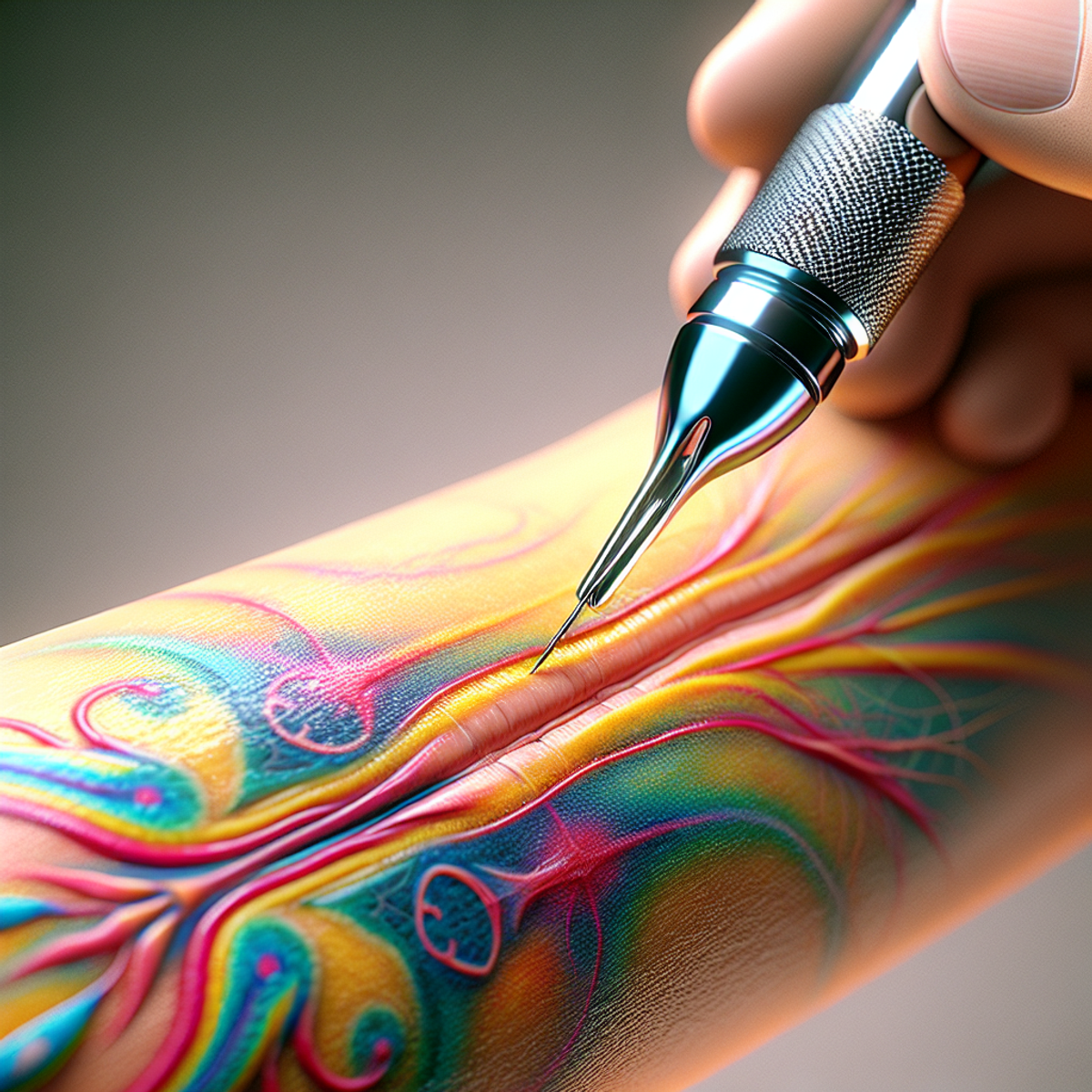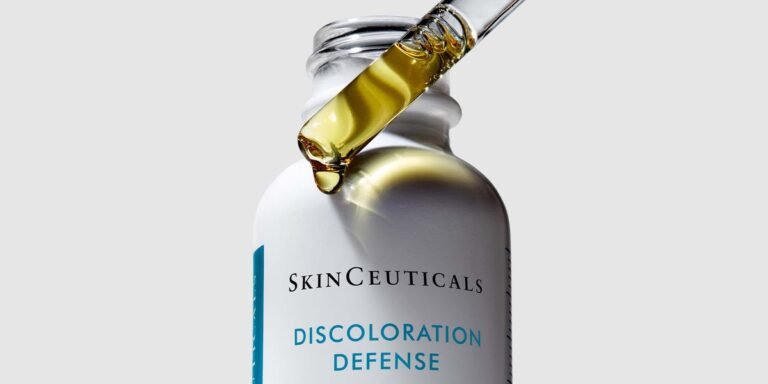Tattoo Over a Scar: What to Know, Pain Level, and More

Introduction
Tattooing over scars has become a powerful way for individuals to reclaim their bodies and boost self-confidence. It is a meaningful and personal journey that allows people to transform their scars into beautiful works of art.
In this article, we will explore the important considerations when it comes to getting a tattoo over a scar, including the healing process, design aspects, and potential risks such as pain and aesthetic challenges.
While the idea of tattooing over a scar may be exciting, it is crucial to be well-informed and consult with a professional tattoo artist. Scar tissue presents unique difficulties when it comes to tattooing, such as uneven texture and reduced ink absorption. Therefore, choosing an experienced tattoo artist who specializes in working with scars is essential for achieving a successful outcome.
Throughout this article, we will delve into various aspects of tattooing over scars, providing valuable insights and guidance:
- Understanding the Tattooing Process on Scarred Skin
- Taking Care of Your Skin Before and After the Tattooing Session
- Design Considerations for Successful Scar Tattoos
- Managing Expectations: Potential Risks and Limitations
Understanding the Tattooing Process on Scarred Skin
Tattooing over scars can be more challenging due to the unique nature of scar tissue. It’s important to know about these challenges and find a tattoo artist who has experience working with scars.
Here are some important things to know:
- Uneven Texture: Scarred skin often feels different than normal skin. It can be raised, sunken, or have a rough texture. This can make it harder for the tattoo artist to create a smooth design. An experienced tattoo artist, like those mentioned in this Byrdie article, will know how to work with these texture differences and make sure the tattoo looks good.
- Less Ink Absorption: Scar tissue doesn’t absorb ink as well as healthy skin because it has fewer blood vessels. This can result in a tattoo that looks faded or requires more touch-ups. A skilled artist will understand this and adjust their technique to get the best results on scarred skin.
- Choosing an Experienced Artist: When getting a tattoo over a scar, it’s crucial to pick a tattoo artist who knows how to handle scars. They should have experience working with scarred skin and be able to show you examples of their previous work. This will give you confidence in their abilities.
By understanding these challenges and selecting a skilled professional, you can increase the chances of having a successful tattoo on your scar.
The next section will discuss how to properly care for your skin before and after getting a tattoo on a scar. This is important for both healing and maintaining the appearance of the tattooed area and the underlying scar tissue.
Taking Care of Your Skin Before and After the Tattooing Session
When getting a tattoo over a scar, it’s important to know how to take care of your scarred skin before and after the session for the best results. Here are some tips:
Before the Tattoo Session
- Understand Your Scar: Different scars have different needs. Knowing the type of scar you have can help you prepare your skin accordingly.
- Moisturize Dry Scars: If you have dry scars, moisturizing them regularly leading up to your tattoo appointment can help improve their texture and elasticity.
- Exfoliate Raised Keloid Scars: For raised keloid scars, gentle exfoliation can be beneficial in smoothing out the surface area where the tattoo will be applied.
- Consult with Your Tattoo Artist: Reach out to your tattoo artist beforehand and discuss any concerns or specific requirements related to your scarred skin. They may have additional recommendations based on their expertise.
After the Tattoo Session
Once your tattoo is done, proper aftercare is crucial for both the newly tattooed skin and the underlying scar tissue. Here’s what you should do:
- Follow Aftercare Instructions: Listen to your tattoo artist’s aftercare advice and follow it carefully. This includes washing, moisturizing, and protecting your tattooed area as instructed.
- Be Patient: Scar healing takes time, and it’s essential to give your skin enough opportunity to recover fully before considering any further tattoo sessions or modifications.
- Avoid Scratching or Picking: Itchy skin is a common part of the healing process, but scratching or picking at your tattoo can lead to complications or affect how well it settles into the scarred area.
- Protect from Sun Exposure: UV rays can fade tattoos and potentially worsen the appearance of scars. Keep your tattooed and scarred skin protected from direct sunlight by wearing loose clothing or using sunscreen with a high SPF.
Remember, each person’s scarred skin is unique, and what works for one may not work for another. If you have any concerns or questions about tattooing over scars, it’s always best to consult with a professional tattoo artist or dermatologist for personalized advice.
Design Considerations for Successful Scar Tattoos
When it comes to getting a tattoo over a scar, choosing the right design is crucial for a successful outcome. Here are some design considerations to keep in mind:
1. Incorporating or Camouflaging Scar Tissue
The design should effectively incorporate or camouflage the scar tissue, depending on your preference. This can be achieved through various techniques such as incorporating the scar into the design itself or using surrounding elements to divert attention away from the scar.
2. Size, Shape, and Color Palette
Consider the size and shape of your scar when choosing a tattoo design. Larger scars may require more intricate designs to effectively cover them, while smaller scars can be incorporated into simpler designs. Additionally, the color palette of the tattoo should be chosen carefully to complement the scar and create a cohesive look.
3. Color Adjustments
Skilled tattoo artists can make color adjustments to minimize the visibility of scars. They can match the ink color to your skin tone or use techniques such as color blending to create a seamless transition between the tattoo and the scar tissue. If you’re concerned about visibility on darker skin tones, there are discussions on platforms like Reddit that can provide insights from individuals with similar experiences.
4. Depth Adjustments
Tattoos over scars may require adjustments in depth to ensure a consistent appearance. Skilled artists can adjust the depth of the tattoo needle to ensure that the lines and shading are consistent throughout the design, even on textured scar tissue. Discussions on platforms like Tattooing101 can provide valuable tips on achieving single-pass black lines.
5. Texture Adjustments
Scar tissue often has a different texture than regular skin, which can affect how tattoos appear on top of it. A skilled artist can use shading techniques to create an illusion of depth and texture in the tattoo, helping to make it blend more seamlessly with the surrounding skin.
Remember, consulting with an experienced tattoo artist who has expertise in working with scars is essential for achieving your desired results. They can guide you in choosing a design that suits your scar size/severity and help you understand how different adjustments can be made to minimize the visibility of scars.
By carefully considering design aspects and collaborating with a skilled artist, you can create a tattoo that not only covers the scar but also enhances your overall aesthetic.
Managing Expectations: Potential Risks and Limitations
Tattooing over scars has its risks and limitations. Here’s what you need to know:
1. Feathering in Scar Tattoos
Due to the uneven texture of scarred skin, there is a risk of feathering or blurring of ink. This can result in less defined lines and a less precise tattoo appearance.
2. Less Defined Lines in Scar Tattoos
The texture of scar tissue may cause the tattoo lines to appear less crisp and defined. This can affect the overall clarity and sharpness of the tattoo design.
3. Ink Rejection in Scar Tattoos
Scarred areas may have reduced ink retention, leading to potential ink rejection. This can result in patchy or uneven coloration within the tattoo.
It’s important to understand that these aesthetic challenges are common when tattooing over scars. However, an experienced tattoo artist can employ various techniques to mitigate these risks and enhance the overall outcome. By carefully adjusting the ink application and utilizing shading techniques, skilled artists can minimize the visibility of scars and create visual depth within the tattoo design.
Open Communication with Your Tattoo Artist
It’s crucial to have open and honest discussions with your chosen tattoo artist about your expectations and any concerns you may have regarding potential aesthetic limitations. With clear communication and a thorough understanding of the unique characteristics of scarred skin, you can work collaboratively with your artist to achieve a tattoo that not only covers the scar but also complements your body’s natural contours.
Remember that every individual’s experience with scar tattoos may vary, so it’s essential to approach the process with realistic expectations while remaining optimistic about the transformative potential of this deeply personal form of self-expression. If you want to learn more about scar camouflage tattoo, you can find additional information from experts in the field.
Conclusion
Getting a tattoo over a scar can be a powerful way to reclaim your body and boost self-confidence. However, it is crucial to approach this decision with careful consideration and consult with a professional tattoo artist who has experience working with scars.
It is important to remember that scars are a part of your personal journey and embracing them can be empowering. Tattooing over scars can serve as a symbol of strength and resilience, allowing you to transform something once seen as a flaw into a work of art.
That being said, it is essential to prioritize your well-being throughout the process. Always take the time to research and choose an experienced artist who understands the unique challenges of tattooing on scar tissue. They will be able to guide you through the design process, ensuring that the tattoo effectively incorporates or camouflages the scar while taking into account factors such as size, shape, and color palette.
If you are not ready for a permanent commitment or want to explore alternative options, consider scar cover-up makeup or temporary tattoos. These can provide a temporary solution while allowing you to experiment with different designs or styles.
Ultimately, the decision to get a tattoo over a scar is deeply personal. By embracing your scars and choosing to adorn them with meaningful artwork, you have the opportunity to turn something that may have once caused pain or insecurity into a beautiful expression of self.










